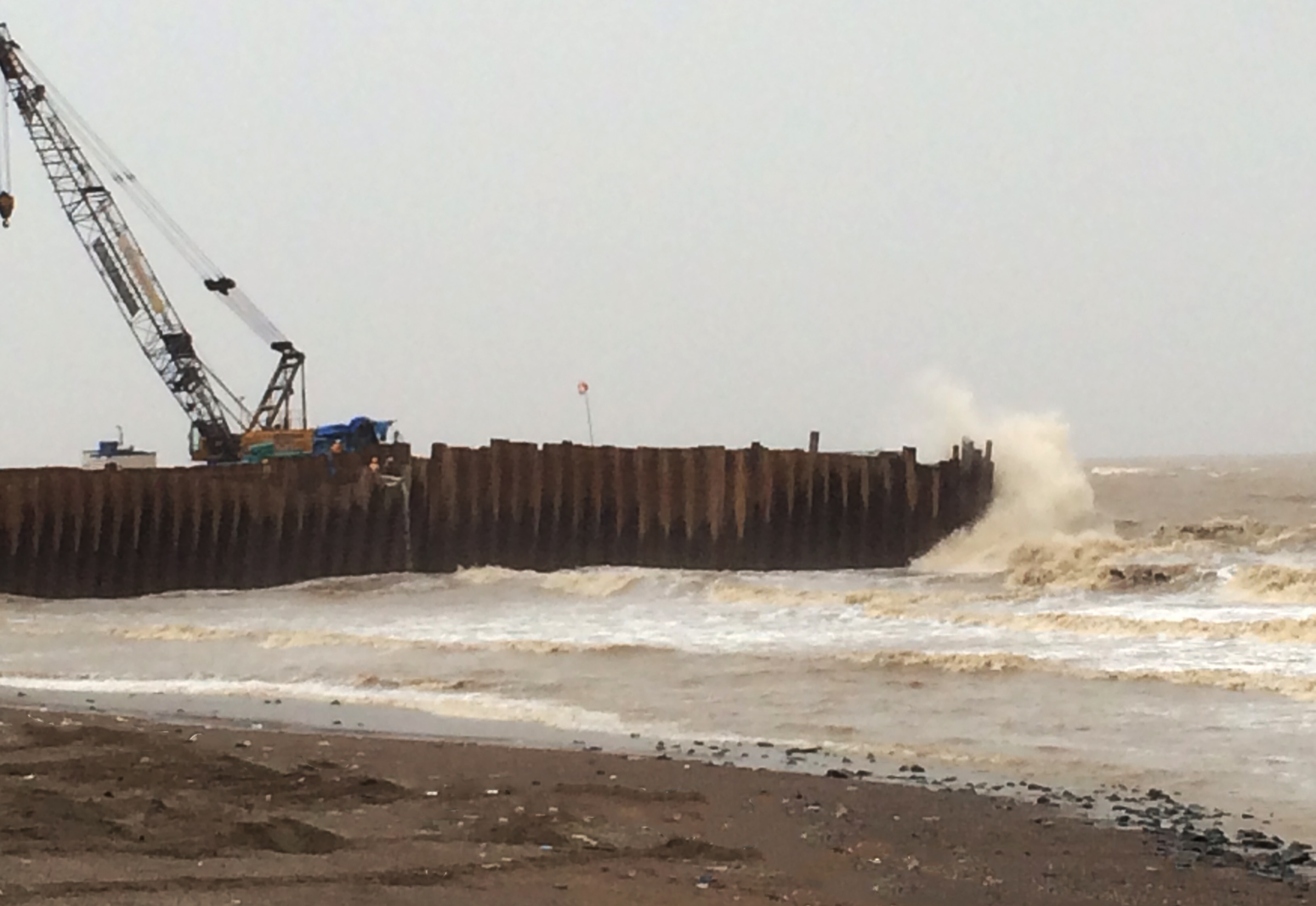January 2016, Vol. 243, No. 1
TechNotes
TDW Repairs Exposed Beach Gas Pipeline in 3 Weeks

A beach in a highly populated tourist area is hardly an ideal work site. But when a 42-inch gas pipeline laid parallel to the seashore shifted and became exposed on the beach near Ubhrat, India, crews had to overcome several unusual challenges posed by the surrounding landscape and notable environmental forces to ensure a safe intervention. Rough seas due to monsoon, cyclonic storm, high tides and sour gas notwithstanding, the urgency of the repair left little room for error.
This particular trunk line was completed in 1996. By 2015, the pipeline had shifted about 82 feet from its original position and could be seen moving considerably with the tide. In addition, the rising sea level exposed the pipeline in the beach area. This caused a tense situation around the beach and within the surrounding community, as the authorities immediately put the beach under constant observation due to the threat of rupture and possible explosion.
In order to carry out the remediation while limiting the amount of downtime, the pipeline operator, its engineering consultant and the main contractor worked with global pipeline solutions provider T.D. Williamson (TDW) to develop a safe remediation.
To accommodate for the nature of the work site conditions, the TDW team created a customized solution that included hot-tapping and then isolating the line using double block and bleed methodology, including the STOPPLE® II plugging system. The solution used a double-STOPPLE isolation unit at one end and a single unit at the other. According to George Easo, TDW project manager, this enabled the repair work to be carried out quickly. As a result, production from the pipeline was shut down only 21 days.
The remediation also helped prevent a potential environmental incident. As predicted, the weakest portion of the line – the insulation joint (IJ) that isolates the offshore and onshore sections – inevitably ruptured in the midst of the hot-tapping process.
“We already had our double block and bleed isolation system installed and pressure-tested, on the upstream location,” Easo said. “This helped the operator isolate the leaking section at short notice to facilitate the venting, cold cutting, welding of new section, charging and commissioning.”
Under tight deadlines and harsh environmental conditions, the TDW crew began the challenging task of welding. This involved preheating the fittings at an elevated temperature before welding, in preparation for tie-in of a new section of pipeline. TDW facilitated the replacement of a 0.75-mile section of pipe on the beach, using application-specific hot-tapping and line isolation systems, including 42-inch NACE-qualified STOPPLE fittings.
The section replacement was complete July 31, the line was purged and gas was charged into the new section. Once the operator verified the safety and integrity of the pipeline, the well was made operational that same day.
“The timeline for completion of the job set by the operator was critical due to the health of the damaged section,” said Easo. “T.D. Williamson worked closely with the engineering consultant, contractor and the operator to successfully complete the project on the planned date.”





Comments